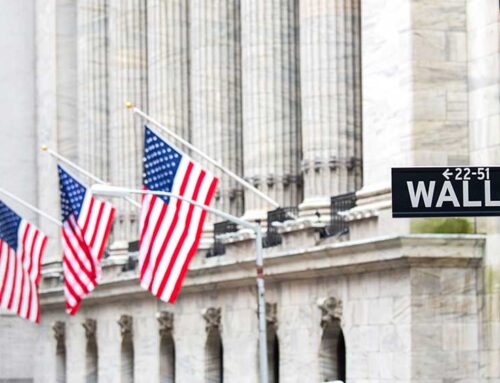Column: Investing in climate resilience is critical need
April 20, 2025
The climate crisis is no longer a distant concern — it’s here, now, reshaping daily life across Hawaii. In 2024, the islands endured record-breaking heat, persistent drought, stronger storms and rising seas. These events are not anomalies; they are part of a pattern that signals an escalating emergency. Without bold and immediate investment in climate resilience, Hawaii’s economy, environment, public health and cultural heritage face mounting threats.
The data is undeniable. Hawaii’s average temperature has increased by 2 F since 1950. In 2024, Puukohola, Kaneohe Bay, South Point and Mauna Loa all recorded their highest ever annual temperatures. Globally, 2024 was the hottest year in recorded history: 2.88 F above pre-industrial levels. Each of the past 15 months shattered global monthly temperature records. This heat has serious consequences, especially for kupuna, outdoor workers and low-income residents. The risk of heat stroke, a potentially fatal condition, is rising in hot and humid environments like Hawaii. Crops suffer, energy bills spike and food insecurity deepens — especially as 85%–90% of our food is imported, much from California’s Central Valley, where 2024 temperatures reached 125 F.
Rainfall patterns are also shifting. While 22 rain gauges recorded record daily totals in 2024, areas like South Kohala and North Kona experienced rainfall levels 25%-30% below average. Honoli‘i Stream on Hawaii island received more than 220 inches — 104% of normal — demonstrating the increasing volatility of the water cycle. Streamflow is declining across the islands, a sign of depleting aquifers, especially on Oahu, where groundwater supplies all of the island’s drinking water. By March 2024, 41.6% of the state was under severe drought. Maui farmers reported crop losses as high as 40%. In June, Honolulu saw just 0.06 inches of rain — an 88% shortfall.
Wildfires have become alarmingly frequent. On Oahu, fire incidence has surged by 400% since the 1960s. In 2023 alone, 214 wildfires scorched more than 12,000 acres statewide. Drought, invasive grasses and high winds create the perfect storm — one tragically realized in the devastation of Lahaina.
The seas are rising faster, too. The rate of global sea level rise has doubled over the last 30 years. King tides in Honolulu now bring water levels 1.1 feet above average, while coastal erosion reshapes communities on the North Shore and West Maui. Rising groundwater has begun flooding roads and storm drains across Waikiki and Kakaako. Meanwhile, Hawaii’s 88,000 cesspools are increasingly vulnerable to contamination from rising seas, putting the state — already grappling with the highest MRSA and staph infection rates in the U.S. — at greater health risk.
>> RELATED: Column: Celebrating aloha ‘aina means stewardship, funding
>> RELATED: Column: State, step up as federal cuts threaten conservation
Our oceans have absorbed over 90% of global warming’s excess heat. In 2024, ocean temperatures reached an all-time high. This fueled the the most extensive global coral bleaching event ever recorded — starting in February 2023 and continuing into 2025. Coral cover is declining sharply, undermining biodiversity, harming tourism, and threatening an $800 million ocean economy. Tropical cyclones are also intensifying. As waters warm, storm frequency and severity are expected to double near Hawaii by the end of the century.
These changes demand urgent action. The United Nations warns that unchecked climate change could erase one-third of global GDP by 2100. For Hawaii, this is not just economic — it’s existential. But decisive investment could instead grow global GDP by 0.2% by 2040, with smart climate policies enhancing efficiency, productivity and innovation.
Globally, some progress is being made. In 2024, 92% of new electricity came from renewable sources. China alone added more solar power last year than the U.S. has installed in its entire history. But we are still 28% behind schedule to triple renewable capacity by 2030.
Hawaii has set ambitious clean energy goals and leads the nation in renewable energy adoption. But energy transition alone will not save us. Climate resilience must be integrated into every part of our lives — from housing and healthcare to agriculture, transportation and public policy. We need smart infrastructure designed to endure storms, floods and fires. We need to protect natural buffers like native forests, streams, wetlands, beaches and coral reefs.
We need to center Indigenous knowledge systems and community voices in climate planning — drawing from traditional practices like ahupua‘a land management and grassroots water stewardship.
Robust, localized climate science is essential to this effort. Modeling and monitoring will guide risk assessments and inform policy. Equally vital is our emergency response capacity. Proposals to weaken FEMA — already under political threat — would leave frontline communities more vulnerable at a time when disasters are growing more frequent and more deadly.
Ultimately, this is not just about reducing losses. It is about building a thriving, regenerative future rooted in aloha ‘aina and pilina — relationships with place, and with each other, through time. Delaying action will only raise the cost in lives, livelihoods and ecosystems. But acting now — with justice, foresight and resolve — will allow Hawaii to lead the world not in climate suffering, but in climate solutions.
Chip Fletcher is interim dean of the School of Ocean and Earth Science and Technology, University of Hawaii-Manoa.
Search
RECENT PRESS RELEASES
Related Post




